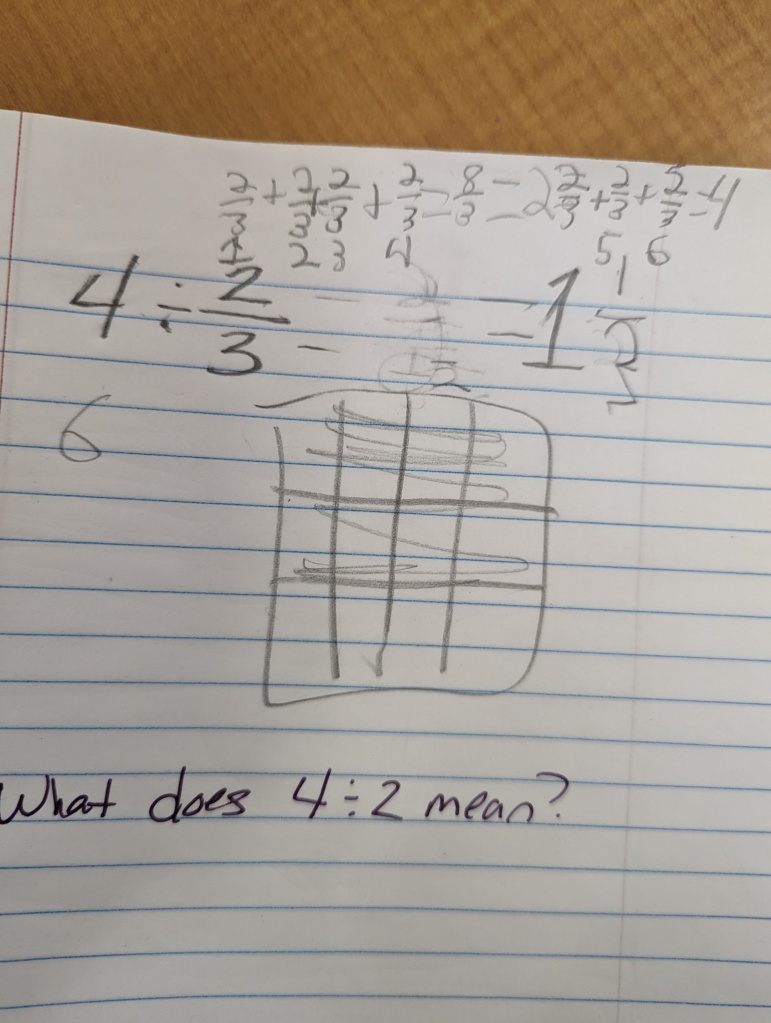I appreciate the coherent connectedness of good curriculum when I see students making connections as they move through a unit concept. At the same time we know that no one learns the same thing, in the same way, at the same moment in time, so the need for additional time with a concept and extension opportunities are always a necessity. In our school, we typically address the additional time element during small group time, but extensions seem to be more of that ‘back pocket’ in-the-moment teaching move that is challenging and fun at the same time. We have to think quickly about the purpose of the extension problem/prompt and the quick question(s) to support students in moving forward in their thinking without a lot of back and forth because the lesson must keep moving for the rest of the class.
‘I’m finished, what do I do?’
Our 5th grade class is finishing up their unit on fraction multiplication and are at the point of explaining the generalization of multiplying numerators and denominators. As I was monitoring the other day, I saw two students who quickly, and correctly, finished up and were waiting for the whole class discussion – I am sure we are all all too familiar with this scenario! I asked them to grab their math journals (highly recommend everyone has a journal) and quickly needed to come up with a problem. I had just come from our 5th grade PLC, during which we were planning for the upcoming fraction division unit by working through some 5th and 6th grade fraction problems and digging into the math as learners. Selfishly, I was curious to see how students approached one of the division problems we worked on. So, I ask them to try and solve 4 ÷ 2/3 .
Class ended and when I walked in the next day they couldn’t wait to talk to me about it. I mean, what is better than that? This is what they showed me at the start of class:


This is where I love curriculum coherence, but see the need for dropping novel problems in students’ laps to get them out of the mindset that all problems they do in this unit will be about that unit concept. While there is so much interesting thinking here, they automatically approached it like they would a fraction multiplication problem, which if they leveraged their understanding of division might have worked, but in this case they both were having the feeling that it wasn’t quite right.
‘Can you give me a hint?’
The lesson was starting but they wanted a hint. I needed a quick question I could write down and leave for them to revisit when they had time during the lesson. I tried, ‘How do you think about 4 ÷2?’ and got a questioning look, so I tried again with different wording. ‘What does 4 ÷ 2 mean?’. I saw a lightbulb as she wrote her answer so I went to the other student and dropped the same question.


‘Can that be right?’
They used repeated addition and skip counting to arrive at 6. They were so excited, but then one of them asked me how it can be 6 when that is more than 4 and they were dividing. I literally couldn’t have asked for a better question! As we ended class, I wrote the following string of problems on their papers for them to think about:
4 ÷ 4
4 ÷ 2
4 ÷ 1
4 ÷ 2/3
4 ÷ 1/2
The coolest thing was that as I was giving them these problems, other students wanted to get in on the action too!
To be continued when I go back into school this week…